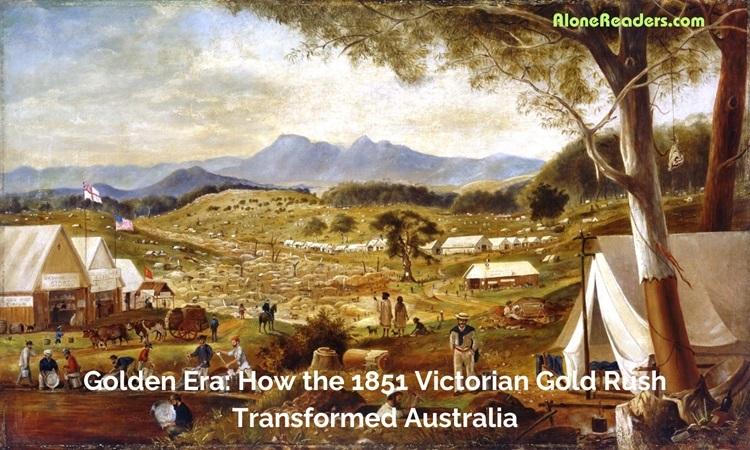
In 1851, a discovery in Victoria sparked a series of events that irrevocably changed the course of Australian history. The finding of gold in this region ignited what is known as the Victorian Gold Rush, a period that not only redefined Australia’s economy but also laid the foundations for a diverse and modern nation.
Prior to the gold rush, Australia was largely perceived as a distant land of convict colonies, isolated from the significant economic centers of the world. The discovery of gold, however, turned these perceptions on their head. News of gold in Victoria spread like wildfire, reaching corners of the globe and igniting a sense of adventure and opportunity in people from varied backgrounds.
The influx of migrants was immediate and overwhelming. People from all walks of life and from various parts of the world flocked to Australia, each driven by the dream of striking it rich. This wave of migration was unparalleled in Australian history. Chinese, Europeans, Americans, and people from other British colonies arrived in droves, bringing with them their cultures, languages, and hopes.
The impact on Australia’s population was staggering. Within a year, the population of Victoria had tripled, and by the mid-1850s, the Australian population had nearly doubled. The demographic landscape of the nation was being rewritten, and with it, the social fabric began to change. This period marked the beginning of Australia’s journey towards becoming a multicultural society.
Economically, the effects of the gold rush were profound. At its peak, an astonishing two tonnes of gold were being poured into Melbourne’s Treasury Building each week. This immense wealth transformed not only the Victorian economy but also the financial landscape of the entire nation. The influx of gold led to increased trade and investment, and Australia began to emerge as a significant economic player on the global stage.
The newfound wealth also sparked rapid development in infrastructure and services. Roads, railways, and telegraph lines were built, connecting previously isolated regions and fostering the growth of new towns and cities. The face of Australian urban centers changed dramatically. Melbourne, in particular, experienced a metamorphosis, evolving from a modest town into a bustling, vibrant city. Grand buildings and institutions were erected, symbolizing the prosperity and optimism of the era.
Moreover, the gold rush played a crucial role in shifting Australia away from its identity as a convict colony. As wealth flowed in and the population diversified, the stigma associated with Australia’s penal colony past began to fade. The nation started to forge a new identity, one characterized by opportunity, prosperity, and diversity.
The societal impact of the gold rush was equally significant. The sheer diversity of the migrant population challenged existing social norms and values. While this period was not without its conflicts and challenges, particularly in terms of racial tensions and the treatment of the Indigenous population, it also laid the groundwork for a more inclusive and varied society.
Furthermore, the gold rush had a notable impact on Australian politics and governance. The influx of migrants and the growth in wealth led to demands for more democratic and representative government. This period saw the introduction of reforms, including the secret ballot, which was first implemented in Victoria in 1856.
As the gold rush waned in the late 19th century, its legacy continued to shape Australia. The nation had been transformed from a distant group of colonies into a vibrant, prosperous, and diverse country. The foundations for a modern Australia, characterized by dynamic cities, a strong economy, and a multicultural society, had been firmly laid.
In conclusion, the discovery of gold in Victoria in 1851 was more than just a remarkable event in Australia's economic history. It was a catalyst for profound and lasting change. The gold rush era not only enriched Australia materially but also played a pivotal role in shaping the nation's identity, fostering its multicultural ethos, and propelling it towards modernity. This golden era, indeed, marked the beginning of a new chapter in Australian history, one that continues to influence the nation to this day.